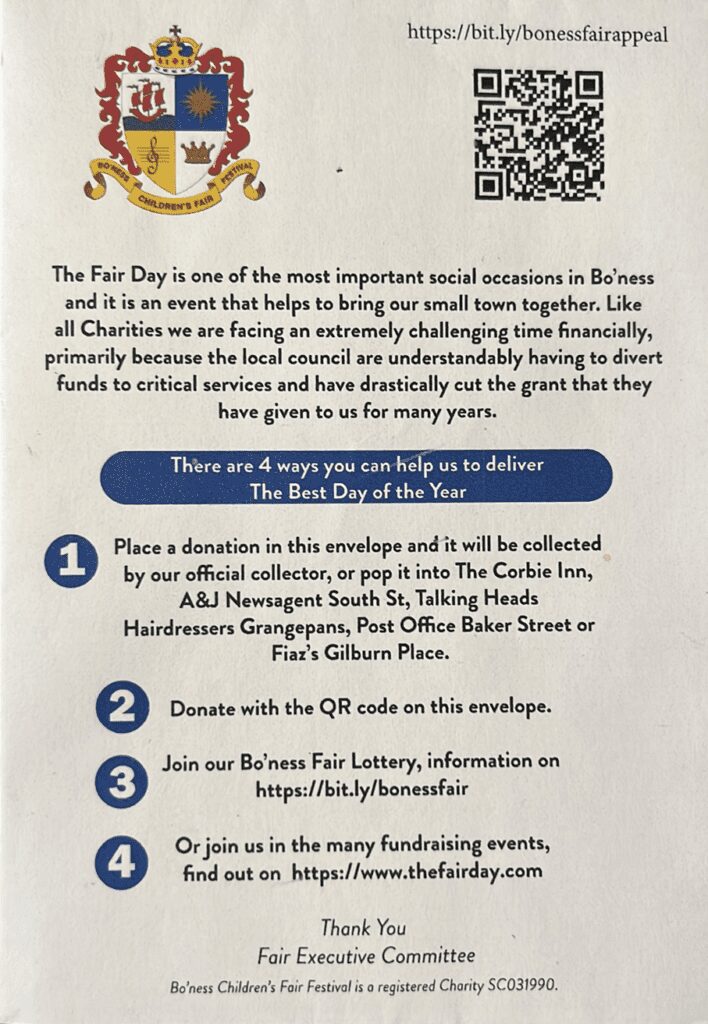BEING a rare breed of outsider, the lesser common southerner, moving to a quaint mining town was by no means exhilarating on the first thought. Upon reading a route map of the central belt of towns – I was keen to learn about my future dwellings – I read “..a place where even the Rottweiler’s walk in pairs to stay safe…”
Hardly a charming account of the town I was to pledge my teenage years to. However, upon moving here, I decided to throw that book onto the pile of texts which overlook small towns and their customs by judging them on ten minute pressure filled visits. I expect those who write such accounts simply plonk themselves down on a street corner and expect the culture to just hit them. The culture however is here, only it has to be found, and when done so the source is rich.
My house, built on top of the old academy, was ready to move into on Friday the 27th of June 2003. This was perfectly acceptable to the uneducated outsider, even if the sales lady did leave us with the strangest of smug looks, giggling profusely on the way to her car. The Day came to move and we followed the removal truck through the streets of Bo’ness. Flags? Costumes? Music?
“A bloomin’ fairy just passed the window?” I remarked, not fully understanding the commotion.
I was instantly hit by sketches of the League of Gentlemen…” Are you local?” I was indeed not local, as was apparent to every Bo’nessian on show. Everyone was either dressed up in outfits or in their best clothes. Even the Rottweiler’s had their glad-rags on. So I continued on, face pressed to the car window, (and may I mention, we were the only car on the road, something which is laughable in hindsight) and we arrived at the new house. The first few neighbours came to greet us, all amused at our efforts to make sense of the events around us. It was then explained that this was the Bo’ness Fair, the largest children’s fair in Europe. Wanting to become accustomed to the event, we asked to join our neighbours for the rest of the fair.
It was from that experience and appreciation of the fair began to grow. Each year I managed to find ‘obvious’ yet hidden, traditions. For example, last year was the first time I had gone round the arches on the Fair E’en. As I stood in front of what appeared to be the Saudi Arabian Embassy, I was told that this was the Queen’s Moroccan themed arch. I now believe that Bo’ness is either a town of understatements or perhaps just blind modesty.
When researching the Fair history this year I was shocked to learn of its origins. Originally to mark the celebrations of the new rights for miners, it was a day’s holiday taken for sessions of drinking. This was however done in the most gentlemanly of manners. Despite this culture remaining today. I feel that it is however in the minority. people come literally from every corner of the globe just to attend the events. And this isn’t just word of mouth, I myself experienced the cosmopolitan feel of last years fair. Through helping to organise and present Valley FM, I was able to assist in interviewing people from Ireland, Switzerland and Poland. Surely this is evidence that it is no smaller town affair, but something of greater size and importance?
I feel that it takes someone who does not come from Bo’ness to realise the extreme proportions of the fair, both physically and financially. However, Bo’nessians see this almost religious act of keeping money aside for the smallest chance that their child will be chosen almost common-place. This is not a sugar-cane report on the Fair, it is well known that Bo’ness, like many other mining towns, suffered greatly after the loss of the trade which financed it. So it is this fact which amazes me most; the extent to which families dedicate themselves to this event.
I feel as if I have missed out on something I could have looked back on in fond memories of my younger years. A lot of my friends and other teenagers from the town tend to complain excessively about the negative points of the Fair. This however never ceases to amuse me. I am constantly bombarded by anecdotes of past fairs from ex-fairies or presentees; always followed by incredible rounds of fit-provoking laughter. People forget how much they have loved and do love the Fair. It is interesting to just take a glance at people’s faces after the laughter has stopped. There seems to be an all-round pause where everyone is staring into a void, smile reaching from one ear to another, remembering some childhood fair memory.
Not every child has the privilege of having such a close-knit community event when they grow up, so it is with that thought that I sign off and look forward to another diverse and successful fair which will create an abundance of new memories for the generation of 2007.
STEVEN HERD






